
EURASIP Journal on Audio Speech and Music Processing
Scope & Guideline
Bridging science and sound through rigorous research.
Introduction
Aims and Scopes
- Audio Signal Processing:
Research on techniques for processing audio signals, including enhancement, separation, and synthesis methods, often leveraging advanced machine learning and deep learning techniques. - Speech Processing:
Studies focused on automatic speech recognition, speech synthesis, emotion recognition, and speaker identification, exploring both traditional and modern computational methods. - Music Information Retrieval (MIR):
Investigations into algorithms and systems for extracting meaningful information from music, including music generation, classification, and recommendation systems. - Acoustic Scene Analysis:
Research on the recognition and analysis of different acoustic environments, including sound source localization and classification, often using sensor networks and advanced signal processing techniques. - Machine Learning Applications:
Utilization of machine learning, particularly deep learning, in various audio and speech applications, emphasizing innovative architectures and training strategies. - Sensor Networks and Distributed Systems:
Exploration of distributed acoustic sensor networks for applications such as sound field reconstruction and environmental monitoring, focusing on algorithmic and architectural innovations.
Trending and Emerging
- AI and Machine Learning Innovations:
There is a significant increase in research exploring the application of artificial intelligence and machine learning techniques, particularly deep learning, for various audio and speech processing tasks. - Cross-Modal Processing:
Emerging studies focus on cross-modal techniques that integrate visual and auditory information, enhancing the capabilities of systems for tasks such as speech recognition and sound event detection. - Real-Time Processing Applications:
A surge in research targeting real-time processing capabilities for applications such as live speech enhancement and interactive music systems reflects the demand for immediate and responsive audio solutions. - Acoustic Scene Understanding and Localization:
An increasing emphasis on understanding and localizing sound sources within complex acoustic environments, often utilizing sensor networks and advanced computational models. - Generative Models in Music and Audio:
The use of generative models for music composition and audio synthesis is trending, with researchers exploring novel approaches to generate complex musical structures and soundscapes.
Declining or Waning
- Traditional Signal Processing Techniques:
There is a noticeable decline in studies focusing solely on traditional signal processing methods, as the field has increasingly shifted towards machine learning and deep learning approaches. - Low Resource Language Processing:
Research specifically targeting low resource languages, while still relevant, has decreased, possibly due to the growing focus on methods applicable to a broader range of languages and dialects. - Basic Audio Feature Extraction:
Papers dedicated to basic audio feature extraction techniques have become less frequent, as newer methodologies incorporating advanced machine learning techniques take precedence. - Acoustic Echo Cancellation:
Although still a critical area, the frequency of publications solely focused on acoustic echo cancellation has diminished, potentially due to advancements in integrated solutions that combine multiple processing tasks. - Manual Music Transcription:
The area of manual or semi-automated music transcription has seen a reduction in focus, likely overshadowed by more sophisticated automated methods powered by deep learning.
Similar Journals

MULTIMEDIA TOOLS AND APPLICATIONS
Fostering collaboration in the evolving landscape of media technology.MULTIMEDIA TOOLS AND APPLICATIONS, published by Springer, is a highly regarded journal in the fields of Computer Networks and Communications, Hardware and Architecture, Media Technology, and Software. Since its inception in 1995, this journal has established itself as a vital platform for disseminating innovative research and developments, maintaining a prominent position evidenced by its Q2 and Q1 rankings across various categories as of 2023. With an ISSN of 1380-7501 and an E-ISSN of 1573-7721, it continues to attract high-quality contributions from scholars and practitioners worldwide. Although it does not currently offer Open Access options, its impact is reflected in impressive Scopus rankings, placing it in the top quartiles in multiple categories, including a remarkable 10th rank in Media Technology. As the field evolves rapidly, the journal’s objectives encompass advancing multimedia technologies and exploring their multifaceted applications, making it an essential resource for researchers, professionals, and students seeking to stay at the forefront of this dynamic discipline. For more information, visit the journal's page to explore recent publications and submission guidelines.
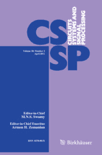
CIRCUITS SYSTEMS AND SIGNAL PROCESSING
Unveiling Trends and Technologies in Signal ProcessingCIRCUITS, SYSTEMS AND SIGNAL PROCESSING, published by Springer Birkhauser, is a highly regarded journal in the fields of applied mathematics and signal processing, boasting an impact factor that reflects its robust academic contributions. Established in 1982, this journal aims to disseminate cutting-edge research that bridges the gap between theoretical advancements and practical applications in circuit design, systems theory, and signal processing. With a Thomason Scopus ranking of Q2 in Applied Mathematics and Q3 in Signal Processing, it stands out as a leading resource for researchers, professionals, and students seeking to enhance their knowledge and innovate within these disciplines. The journal provides insight into the latest trends and technologies, making it an essential reading for those engaged in the development of signal processing methodologies. Although it does not offer Open Access options, it remains a critical repository of knowledge with deep relevance in today's tech-driven landscape.

JASA Express Letters
Advancing acoustics through rapid research dissemination.JASA Express Letters is a distinguished open-access journal published by AIP Publishing, dedicated to fostering rapid dissemination of high-quality research in the field of acoustics and related areas of music and arts. With an E-ISSN of 2691-1191, this journal strives to provide a platform for innovative and impactful studies, showcasing research that bridges disciplines and advances our understanding of acoustic phenomena. Since transitioning to open access in 2021, the journal has gained a reputation for swift publication, accommodating the needs of researchers eager to share their findings with a global audience. Notably, JASA Express Letters ranks in the top quartile for music and arts-related disciplines, standing at Rank #25/180 and Rank #174/552 respectively, reflecting its significance and influence within the academic community. This journal serves not only as a valuable resource for scholars and practitioners but also aims to inspire new directions in both theoretical and applied research, enhancing collaborative efforts in the vibrant fields of acoustics and the arts.

IEEE MULTIMEDIA
Unveiling the future of multimedia technology.IEEE Multimedia, published by IEEE Computer Society, is a prestigious journal dedicated to advancing the fields of multimedia technology and innovations in computing. With an ISSN of 1070-986X and an E-ISSN of 1941-0166, the journal has established a significant impact within the academic community, holding an impressive ranking in various categories: Q2 in Computer Science Applications, Hardware and Architecture, Signal Processing; Q1 in Media Technology; and Q2 in Software as of 2023. Spanning from 1994 to 2024, IEEE Multimedia strives to publish cutting-edge research and development findings, focusing on the convergence of multimedia with engineering and computing disciplines. Researchers and professionals across these domains are encouraged to engage with its rigorously peer-reviewed content, enhancing their understanding and application of multimedia methodologies in their respective fields.
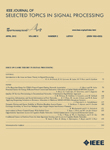
IEEE Journal of Selected Topics in Signal Processing
Transforming Ideas into Impactful Signal Processing SolutionsIEEE Journal of Selected Topics in Signal Processing is a premier academic publication dedicated to the advancement of knowledge in the field of signal processing. Published by IEEE-INST ELECTRICAL ELECTRONICS ENGINEERS INC, the journal boasts an impressive impact factor that places it in the top tier of its category; ranked Q1 in both Electrical and Electronic Engineering and Signal Processing for 2023. Given its esteemed standing, the journal serves as a vital resource for researchers, professionals, and students alike, providing cutting-edge insights and developments that shape the future of signal processing. The journal encompasses a wide array of topics relevant to the evolving landscapes of electrical engineering and computer science, with particular significance in innovative applications and methodologies. As a platform for disseminating high-quality research, this journal remains essential for those seeking to stay at the forefront of this dynamic field. You can explore the latest contributions and findings, benefiting from the journal's influential status in the realm of signal processing.

International Journal of Acoustics and Vibration
Illuminating the Frontiers of Acoustics and VibrationInternational Journal of Acoustics and Vibration is a leading peer-reviewed journal published by the International Institute of Acoustics & Vibration, focusing on the diverse fields of acoustics and vibration. With an ISSN of 1027-5851, this journal has been a pivotal resource since its establishment in 2000, examining both fundamental and applied aspects of sound and vibration phenomena that are critical for advancements in engineering and related sciences. Although it does not offer open-access options, it adheres to rigorous standards of academic excellence, as evidenced by its Q3 category rankings in Acoustics and Ultrasonics and Mechanical Engineering, according to the 2023 assessments. The journal's scope encompasses innovative research, theoretical studies, and practical applications, making it essential reading for researchers, professionals, and students aiming to stay updated with the latest developments in these disciplines. With the growing relevance of acoustics and vibration in numerous industries, the International Journal of Acoustics and Vibration serves as a vital platform for disseminating knowledge and fostering collaboration among scholars and practitioners alike.

Traitement du Signal
Empowering Innovation in Electrical EngineeringTraitement du Signal, published by the INT Information & Engineering Technology Association, is a distinguished journal that serves the vibrant field of Electrical and Electronic Engineering. With an ISSN of 0765-0019 and an E-ISSN of 1958-5608, this journal has made significant contributions to the discipline since its inception. While it currently operates under a non-open access model, it maintains its commitment to disseminating valuable research from 2010 to 2023, despite its recent discontinuation in Scopus coverage. Recognized in the third quartile (Q3) of the category in 2022, the journal provides a platform for researchers, professionals, and students to publish their findings on topics such as signal processing, communications, and related technologies. By curating high-quality articles, Traitement du Signal plays a crucial role in advancing knowledge and fostering innovation within the electrical and electronic engineering community.
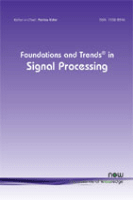
Foundations and Trends in Signal Processing
Elevating knowledge in Signal Processing and beyond.Foundations and Trends in Signal Processing is a premier academic journal published by NOW PUBLISHERS INC, specializing in the dynamic field of Signal Processing. With an impressive 2023 Q1 rank in its category and a notable position of 3rd out of 131 in the Scopus rankings for Computer Science and Signal Processing, this journal stands at the forefront of research dissemination in its domain. Established in 2007, it has provided a platform for high-quality research articles that cover cutting-edge topics and emerging trends in Signal Processing, which is critical for advancements in areas such as communications, image processing, and machine learning. Although the journal operates under a subscription model, it offers a wealth of vital information aimed at researchers, professionals, and students alike, fostering a robust academic dialogue and enhancing the knowledge base within this important field.
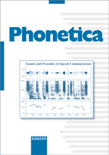
PHONETICA
Connecting Acoustic Science with Linguistic TheoryPHONETICA, published by De Gruyter Mouton, is a premier journal specializing in the interdisciplinary study of phonetics, phonology, and their applications in linguistics and acoustic sciences. With an impressive scope covering critical aspects of acoustics and language, PHONETICA has established itself as a leading platform for innovative research since its inception in 1957, continuing through to 2024. The journal boasts a significant impact, reflected in its esteemed Q1 ranking in both Acoustics and Ultrasonics and Linguistics and Language categories as of 2023, positioning it in the top quartile of scholarly journals in its field. PHONETICA's rigorous publication standards attract a diverse array of researchers and professionals, eager to disseminate their findings in an engaging and scholarly environment. Although not open access, the journal remains a vital resource for those seeking to deepen their understanding and contribute to the evolving dialogue in phonetic research.
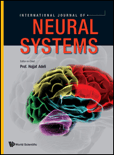
International Journal of Neural Systems
Connecting Ideas Across Computer Science and MedicineThe International Journal of Neural Systems, published by World Scientific Publishing Co Pte Ltd, is a prestigious peer-reviewed journal dedicated to the dynamic field of neural systems research. With an ISSN of 0129-0657 and an E-ISSN of 1793-6462, this journal serves as a vital resource for researchers, professionals, and students interested in the intersections of computer science, neural networks, and communications. Noteworthy for its impact, the journal has achieved impressive rankings in 2023, positioned in the Q1 quartile for both Computer Networks and Communications as well as in the miscellaneous category of Medicine, highlighting its interdisciplinary significance and broad relevance. The journal's Scopus rank places it at #33 out of 395 in its category, reflecting its influence and reach within the academic community. While the journal is not open access, its contributions to advancing the understanding of neural systems are invaluable, offering a platform for disseminating cutting-edge research and fostering collaboration among scholars. Since its inception, the International Journal of Neural Systems remains committed to excellence and innovation in its published content, making it an essential subscription for everyone involved in this exciting and rapidly evolving field.